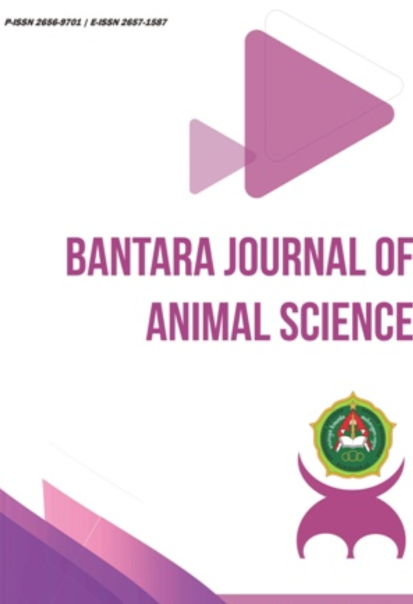Effect of Chicken Meatball Shelf Life With the Addition of Chitosan to Chemical Quality
DOI:
https://doi.org/10.32585/bjas.v3i1.1313Abstract
Chicken meatballs are one of the processed products that are very popular and favored by the public because they taste good and are nutritious. One way to preserve chicken meatballs is using borax or formalin which is bad for health. Chitosan is a natural preservative that comes from shrimp and crab waste that can be used in the long term. This study aims to determine the effect of adding chitosan as a natural preservative for chicken meatballs stored at room temperature on the quality of chicken meatballs which include moisture content, pH value and protein content. This research method used a completely randomized design with long storage factors and the addition of chitosan. The data obtained were analyzed statistically using Analysis of Variance (ANOVA). Further test with the Duncan Multiple Range Test (DMRT) if there is a significant difference between treatments. The variables recorded and observed were moisture content, pH value and protein content of chicken meatballs at room temperature (25?C). The water content of chicken meatballs up to 1.5% chitosan addition treatment showed the best consistency during the shelf life with an average value of 59.31%. The pH value of chicken meatballs with the addition of 2.5% chitosan on the 2nd and 4th day gave a good effect with pH values of 5.56 and 5.78, respectively. Protein content of chicken meatballs with the addition of chitosan 1.5% on the second day gave the effect of increasing the highest protein content up to 7.21%.
Keywords: Chicken meatballs, Chitosan, Shelf life
Downloads
References
Astuti, P. and H. Suripta. 2020. Performance of broiler chicken carcass provided with water extract (Phyllanthus niruri L) and Moringa (Moringa oleifera Lam). Bantara J. Anim. Sci. 2 (2) : 61-67
Hafdani, F.N. and Sadeghinia. N., 2011. A Review on Application of Chitosan as a Natural Antimicrobial. World Academy of Science. Engineering and Technology, 50.
Henriette, M.C. Azeredo, de Britto, D. and Assis., O.B.G., 2010. Chitosan Edible Films and Coating – Review, Embrapa Tropical Agroindustry, Fortaleza, CE, Brazil, ISBN 978-1-61728-831-9.
Irianto D, Elis P, Istiana, Sari E.C, 2009. Pengaruh penambahan chitosan yang diisolasi dari Limbah Cangkang Udang Windu (Penaeus monodon) terhadap Mutu Organoleptik, Mutu Kimia dan Daya Simpan. Jurusan Kimia Fakultas MIPAUniversitasNegeriSurabaya.http://davidirianto.blogspot.co.id/2009/02/pengaruh-penambahan-chitosan-yang.html. Diakses 16 Nopember 2016.
Linawati. 2004. Chitosan, Limbah Kulit Udang untuk Diabetes dan Hipertensi.http://kompas.com. Diakses 18 Juni 2016.
Murtini, J.T, Dwiyitno dan Yusma. 2008. Penurunan Kandungan Kolesterol pada Cumi- cumi dengan Chitosan Larut Asam dan Pengepresan. Prosiding Seminar Nasional Tahunan V Hasil Kelautan Tahun 2008. Jakarta.
Soeparno. 1992. Ilmu dan Teknologi Daging. Gajah Mada University Press. Yogyakarta Stadelman, W.J., V.M. Olson, G.A. Shmwell, S. Pasch. 1988. Egg and Poultry Meat Processing. Ellis Haewood Ltd.
Sudrajat, G. 2007. Sifat fisik dan organoleptik bakso daging sapi dan daging kerbau dengan penambahan karagenan dan khitosan. Fakultas Peternakan : Institut Pertanian Bogor
Wardaniati, R.A dan Sugiyani S. 2009. Pembuatan Chitosan dari Kulit Udang dan Aplikasinya untuk Pengawetan Bakso. Makalah Penelitian, (online), (http://eprints.undip.ac.id/1718/1/makalah_penelitian_fix.pdf , diakses 8 Oktober 2016).
Winarno . F.G. 1997. Kimia Pangan dan Gizi. PT Gramedia Pustakan Utama, Jakarta.





